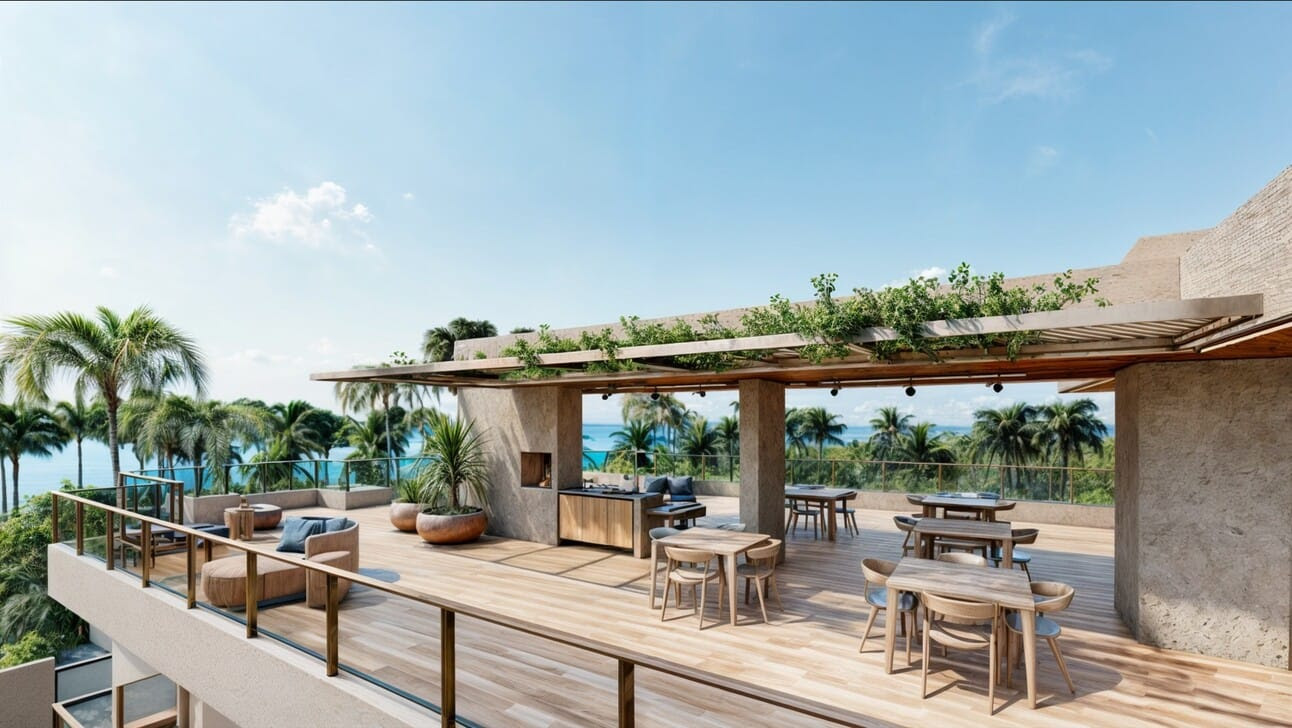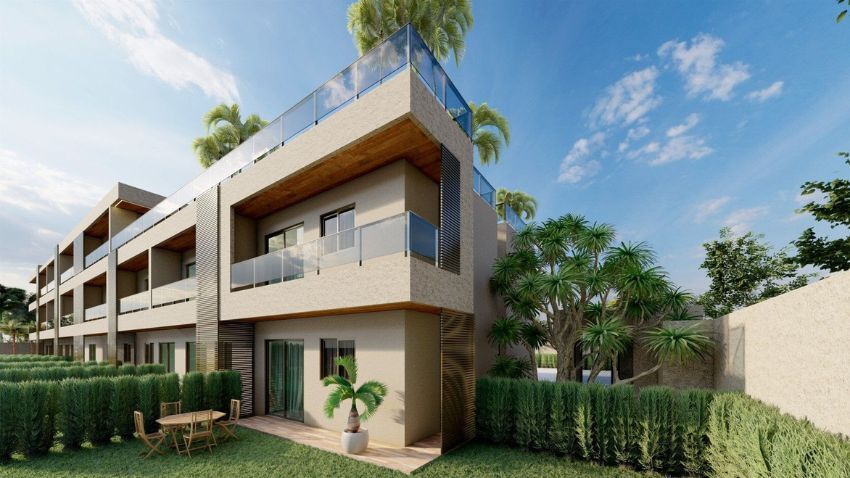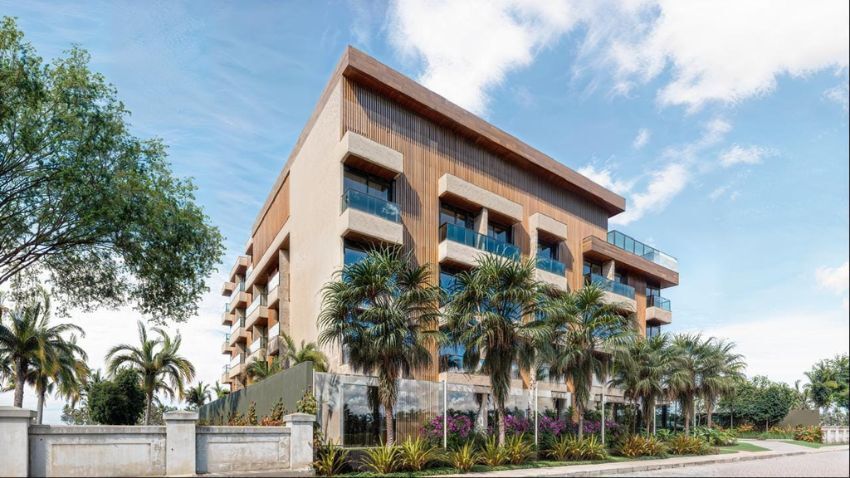Paved, Walkable & Organized: Welcome To The "Acceleration Phase"
If you were to visit Porto das Dunas today, you would feel something that is hard to capture in photos……it feels organized.Traffic flows smoothly....
4 min read
 Team Brazil Beachfront
:
May 2, 2024
Team Brazil Beachfront
:
May 2, 2024

As you consider Brazil's trajectory towards securing a robust economic future, it's essential to recognize the pillars that could fortify its long-term investment growth potential. Reflect on how enhanced macroeconomic stability, coupled with astute fiscal strategies, might set the stage for this vibrant market. From there, imagine the impact of targeted investments in burgeoning sectors such as healthcare and transportation, not to mention the essential role of infrastructure enhancements. What if these elements were synchronized with a welcoming climate for foreign investments and a forward-leaning embrace of technological innovations? Let's explore how such a coordinated approach could transform Brazil's economic landscape.
Leverage Brazil's strategic fiscal management to invest in sectors with high growth potential like healthcare and truck rentals.
Engage in Public-Private Partnerships (PPPs) through the Investment Partnership Program to enhance infrastructure and logistics.
Capitalize on increasing foreign direct investment, particularly in renewable energy and technology sectors.
Explore opportunities in digital innovations, including blockchain and cryptocurrency markets.
Focus on sectors benefiting from regulatory reforms and privatization to optimize investment outcomes.

Brazil's mid-1990s economic stabilization set the stage for its ongoing growth and development. This period marked a significant turning point where macroeconomic stability began to take root, profoundly shaping the country's future. To maintain this stability, Brazil's fiscal policy has increasingly focused on fiscal consolidation. This approach is vital for reducing the fiscal deficit that has historically burdened the public sector.
Managing inflation expectations has been a key strategy. Since adopting an inflation-targeting framework in 1999, Brazil has successfully curbed its inflation rates, contributing greatly to its economic stability. This stability is essential for enhancing growth prospects, aiming to lift real GDP growth from under 3% in 2006 to a more robust 4.5-5% annually.
Reforms in critical areas like social security are pivotal. These reforms aren't just about cutting costs but are aimed at creating a more sustainable public sector that supports long-term growth without recurring to excessive tax hikes. Such strategic fiscal management helps guarantee that the gains from macroeconomic stability aren't eroded by unchecked public spending or short-sighted financial policies. As you look at Brazil today, these concerted efforts in fiscal policy and reform are foundational to its trajectory toward sustained economic health and development.
Reflecting on these economic foundations, let's explore how Brazil's fiscal policies are shaping its investment landscape. You'll see that Brazil's approach to fiscal management, particularly its public debt-to-GDP and expansionary fiscal policies, plays a pivotal role in framing the environment for long-term investment growth.
The rigid budget structure and high interest burden have been significant hurdles. The country's high reference rates exacerbate the interest burden, making debt servicing a costly affair. This situation is compounded by high contingent liabilities, such as social security commitments, which stretch the fiscal capacity even further.
Here's a concise breakdown of Brazil's fiscal challenges:
|
Aspect |
Detail |
Impact on Investment |
|
Public Debt-to-GDP |
Expected to reach 66% by 2026 |
Limits fiscal flexibility |
|
High Interest Burden |
Due to high reference rates |
Increases debt servicing cost |
|
Contingent Liabilities |
High social security commitments |
Adds to fiscal stress |
|
Rigid Budget Structure |
Limits allocation efficiency |
Constrains responsive spending |
|
Expansionary Fiscal Policies |
Aimed at stimulating growth |
Short-term boost but long-term risk |
Understanding these elements, you're better positioned to gauge how Brazil's fiscal realities might shape future opportunities and challenges in the landscape of investment.

Exploring sector-specific growth opportunities, the healthcare and truck rental industries stand out as promising areas for investment in Brazil. In the healthcare sector, Rede D'Or leads with over 50 hospitals, focusing on the premium segment. Their strategic acquisitions have positioned them well within this underpenetrated market, offering robust earnings potential and contributing positively to Brazil's economic growth.
In the truck rental industry, Vamos dominates with an 80% market share and a remarkable 16% return on invested capital. Like Rede D'Or, Vamos benefits from appealing valuations and is poised for further growth, leveraging Brazil's evolving market dynamics.
Both sectors exemplify how targeted investments can exploit growth opportunities in areas that still have much room to expand compared to more developed markets like the U.S. Investing in these areas means tapping into a reservoir of potential that could yield substantial returns as these sectors mature and expand.
You can tap into Brazil's economic potential through the Investment Partnership Program (PPI), which since its inception in 2016, has been pivotal in enhancing the country's infrastructure across transportation, energy, and sanitation sectors. This program facilitates private investments in key sectors, greatly boosting infrastructure quality and, consequently, economic growth.
The PPI's focus on public-private partnerships (PPPs) has mobilized expertise and funding from the private sector, making sure that projects like airport concessions, port upgrades, and the expansion of highways and railways not only modernize but also expand Brazil's transportation network.
These initiatives are designed to overcome historical bottlenecks in logistics and support Brazil's push towards becoming more competitive on the global stage. By engaging in PPPs, you're not just investing in infrastructure; you're also fostering job opportunities and enhancing public services.

Brazil's robust attraction of $23.8 billion in foreign direct investment in 2020 underscores its economic resilience amid global challenges. You'll find the services sector leading in capturing these investments, notably ahead of the manufacturing sector. This influx is a clear indicator of investor confidence, bolstered by the country's strategic initiatives.
The government's privatization programs and regulatory reforms have been pivotal. These efforts streamline operations for foreign investors and enhance the overall business climate. Additionally, infrastructure projects aren't just improving the country's physical assets but are also magnets for substantial foreign capital, ensuring you benefit from improved facilities and services.
Particularly striking is the growing interest from foreign investors in Brazil's renewable energy sector. This aligns with global shifts towards sustainability and positions Brazil as a key player in green technology investments. China, as the largest investor in 2020, focused significantly on this area, alongside agribusiness and infrastructure, indicating a strategic partnership that leverages Brazil's natural and human resources.
Technological advancements have greatly propelled over 3.2 million Brazilians into engaging with cryptocurrencies, marking a remarkable trend in digital adoption across the nation. You're witnessing a surge in the crypto market that underscores a broader embrace of digital technologies in Brazil. This movement isn't just about numbers; it's a clear indicator of how rapidly cryptocurrency adoption is weaving into the daily lives of millions.
As Brazil stands out in Latin America for its high adoption rates, predictions point to even more significant growth in cryptocurrency engagement by 2023. What's driving this? A robust foundation laid by blockchain technology, which isn't only bolstering the crypto landscape but also energizing various other sectors. You'll see blockchain's impact in remittances, NFTs, decentralized finance (DeFi), and gaming, where innovative solutions are increasingly prevalent.
As you explore Brazil's investment landscape, remember the importance of macroeconomic stability and strategic fiscal policies. Focus on booming sectors like healthcare and transportation, and don't overlook the transformative potential of infrastructure projects and technological innovations.
By tapping into foreign investment trends and leveraging technologies like blockchain, you're positioning yourself at the forefront of sustainable growth. Brazil's future as a top investment hub is in your hands; seize these opportunities to drive prosperity.


Brazil Beachfront is your trusted source for uncovering the incredible opportunities along Brazil’s breathtaking Northeastern coastline. With Brazil’s economy on the rise and its middle class growing rapidly, the market offers an undeniable upside for offshore investors.
The newsletter also showcases past projects, providing readers who have purchased real estate with detailed construction updates to keep them informed every step of the way. From the lifestyle appeal of Brazil’s pristine beaches to the financial advantages of investing in this high-growth market, Brazil Beachfront delivers the insights and updates needed to capitalize on one of the world’s most dynamic real estate opportunities.

If you were to visit Porto das Dunas today, you would feel something that is hard to capture in photos……it feels organized.Traffic flows smoothly....

If you’ve been following Brazil Beachfront for any length of time, you already know Porto das Dunas has been one of our most closely watched markets...

Two Saturdays back, I went live with hundreds of you to unveil what I consider one of the most compelling investment opportunities I have shared to...